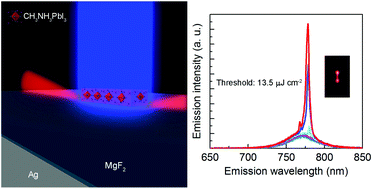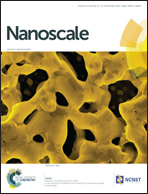Organic–inorganic perovskite plasmonic nanowire lasers with a low threshold and a good thermal stability†
Abstract
Plasmonic nanolasers have ushered in a paradigm of deep sub-wavelength coherent optical sources with ultrafast dynamics that exploit the strong confinement capabilities of metals. Although these devices are usually associated with higher thresholds due to absorption in metals, the high gain inorganic II–VI and III–V semiconductor materials have allowed the realization of plasmonic nanolasers operating under ambient conditions. In this work, we introduce single-crystalline lead halide perovskite (CH3NH3PbI3) nanowires as an organic–inorganic semiconducting gain material to the plasmonic laser community. We demonstrate plasmonic laser action using a hybrid geometry whereby the perovskite nanowires are placed on a silver substrate with an insulating spacer layer. We report relatively low threshold operation under ambient conditions (13.5 μJ cm−2), and the devices work well even at temperatures up to 43.6 °C. The demonstration highlights the high optical gain achievable in perovskite materials and thus provides a solution to high gain materials for plasmonic devices.


 Please wait while we load your content...
Please wait while we load your content...